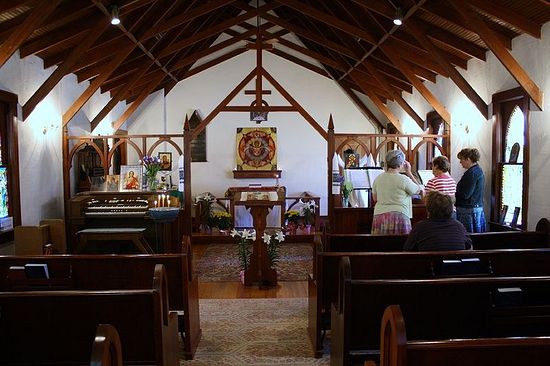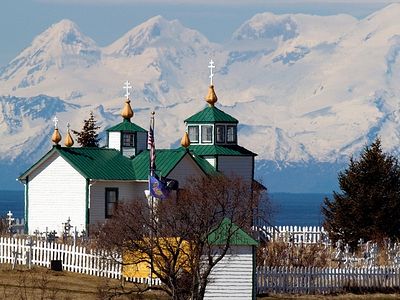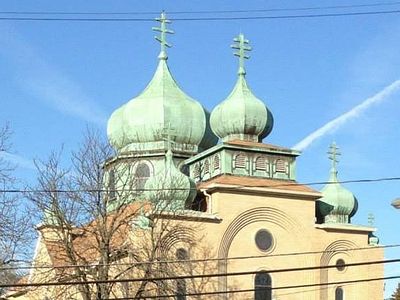Source: The Las Cruces Sun-News
Our Bishop, Daniel, came last weekend for his annual visit from his office in New Jersey. Maybe you saw the article in Sunday's Sun-News, with his comments about the unrest in Ukraine. I write my columns for a broad audience, but I also write from a particular Christian background. So, please let me introduce "us" again.
St. Anthony of the Desert is a mission of the Ukrainian Orthodox Church of the USA. All services are in English with a little Spanish. We are in the communion of international Orthodox Churches, with 350 million people worldwide, and in America we participate in the Assembly of Canonical Orthodox Bishops.
Here's the story.
Orthodoxy came to Alaska in the 18th century, initially brought by eight Russian monks who crossed the Siberian taiga and rowed across the Bering Straits to found the church in Sitka.
As America grew, Orthodox Christians came, like many others, in ethnic enclaves. Many came to work in foundries, mills, and mines. They were often poor and undereducated, but they built churches out of faith with sweat and pennies in communities from Blakeslee, Pennsylvania and South Bound Brook, New Jersey to Butte, Montana and Seattle, Washington. Very few settled in the Southwest, which is partly why we are little known here. We are also little known because America was, until recently, dominated by Protestantism and, in some areas, Roman Catholicism — like Las Cruces and the Mesilla Valley.
Orthodoxy does not fit categories most people use for American religion. We are Catholic but not Roman; we are evangelical but not Protestant; we are deeply biblical, but we do not hold to "the Bible alone;" we are Orthodox but not Jewish; we are hierarchical (with Bishops, Archbishops, Patriarchs) but we are also congregational (each parish is self-governing under its bishop). We look exotic because many people are not used to formal worship. We pre-date Roman Catholicism and, of course, the Protestant movements of the 16th century and later. Orthodoxy stems from the earliest days of the Christian movement. Orthodox Christians develop missions in regions approved by the bishop and chartered by the national church. Local parishes are extensions of the Bishop's ministry — hence the annual visits.
In Orthodoxy, expansion became international within ethnic jurisdictions. Our Ukrainian Church has parishes in Canada, Germany, Belgium, Wales, England, Brazil, Mexico and a growing presence in Italy. Churches the Russians started in Washington or the Greeks started in Massachusetts now have people from all backgrounds, many with no previous history as Orthodox. Seminaries are full of converts; for example, fewer than 50 percent of students at Holy Cross, the Greek jurisdiction seminary in Brookline, Massachusetts, are of Greek heritage.
Our beloved Bishop Daniel is himself a convert; having grown up in the latter days of the Soviet regime in Ukraine, he came to faith in his 20s. It's an amazing story.
The Orthodox Christian Mission Center provides more than evangelists; it provides doctors, teachers, builders, and economists in countries worldwide. International Orthodox Christian Charities channels money and resources as needed: New Orleans after the flood and the Far East after the Tsunami, to mention two. Orthodox chaplains and counselors were present after the destruction of the World Trade Center, only a block from St. Christopher's Orthodox Church. We also unite in university and college work through Orthodox Christian Fellowship, a chapter of which we established at NMSU.
St. Anthony of the Desert is a loving and vibrant community. We invite you to visit, especially on the 31st of May when we will again host an open house and supper, beginning with Vespers, our prayer service, at 6 p.m. Please come and see.
Fr. Gabriel Rochelle is pastor of St. Anthony of the Desert Orthodox Mission, Las Cruces. He also teaches biblical studies at St. Sophia Orthodox Seminary. Visit the church web site at http://stanthonylc.org.



